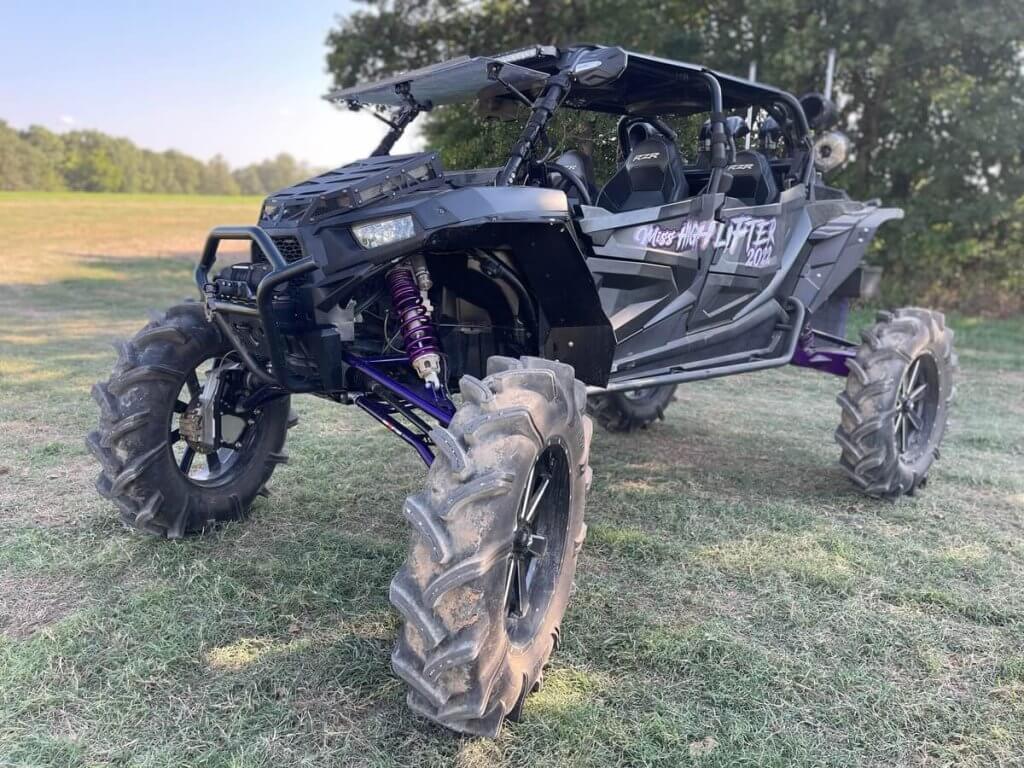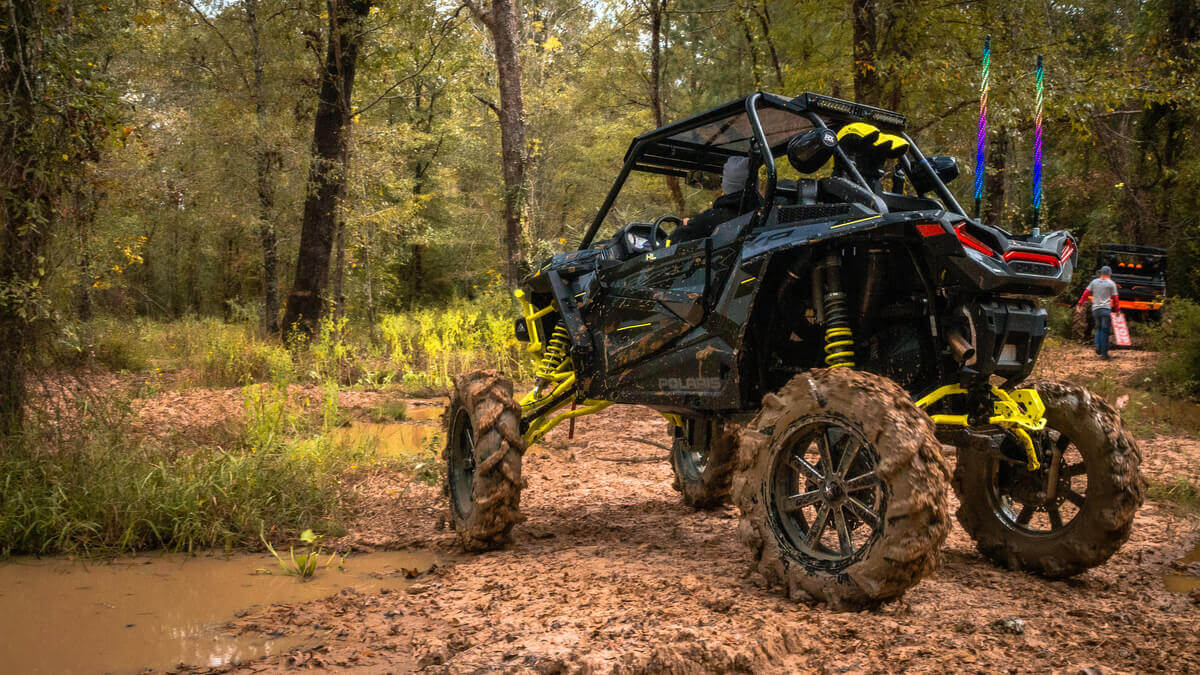
At High Lifter, we know lift kits. We know how to style them, how to replace them and how to install them. Lifting your ride gives it an unquestionably rugged look, but lifting your four wheeler can open the way to new, gnarlier terrain as well. There’s really no downside to lifting your rig.
However, installing a lift kit can be intimidating if you’re not as comfortable around a toolbox as you are on the trails. Before we give you a quick how-to on installing a lift kit on your own, it’s important to note that having a professional install your lift is also a good option.. After all, keeping your ATV ride-ready is the most important thing!
You might wonder how much it costs to install a lift kit. If you have a professional do it, it simply costs the price of the lift kit plus the labor to install it.
If you have your toolbox out and feel comfortable moving forward without a professional’s warranty, then let’s get to the meat of this article: how to install a lift kit.
How Does A Lift Kit Work?
A lift kit quite literally lifts the chassis of your UTV or ATV higher than its wheels. Lifting your rig not only adds a tougher, more impressive look to your rig. But it gives you additional clearance to ride over obstacles and keep your ride’s chassis from getting scratched and dinged by brush or other obstacles on your path. It can also make riding though foliage a lot easier than it might be with a non-lifted ATV or UTV. Overall, lifting your ride makes a big difference in both the look and feel of your ride.
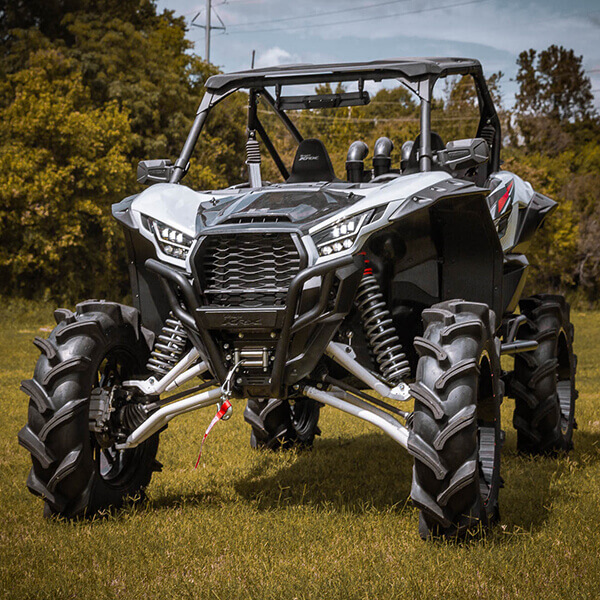
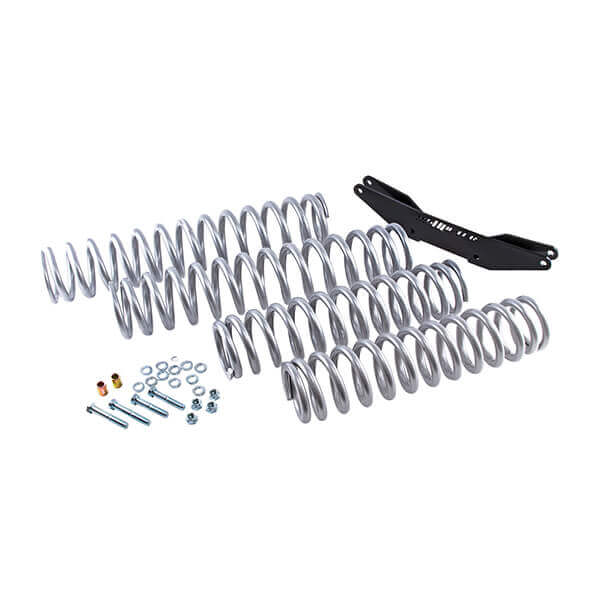
What Equipment Do I Need?
Well, it really depends on the lift kit you buy. Some kits require you buy the exact, model-specific nuts and bolts yourself, while others require only a basic hand tool.
At High Lifter, we offer lift kits for all major makes and models in two signature High Lifter styles – the Big Lift Kits and our series of standard lift kits. Some kits come with all the necessary hardware you need, others come with just what you need to lift your chassis.
No matter what lift kit you choose, it will always come with High Lifter’s stamp of approval and the backing of our tech and customer service experts, available to help you find the perfect fit for your ride.
Step By Step Installation: How to Install a High Lifter Lift Kit
Whew. Now that all of that is out of the way, we can address the main reason you’re here. How do you install your High Lifter lift kit? Simply put, you install your lift in two parts – first, lift the front end of your vehicle and then lift the back end.
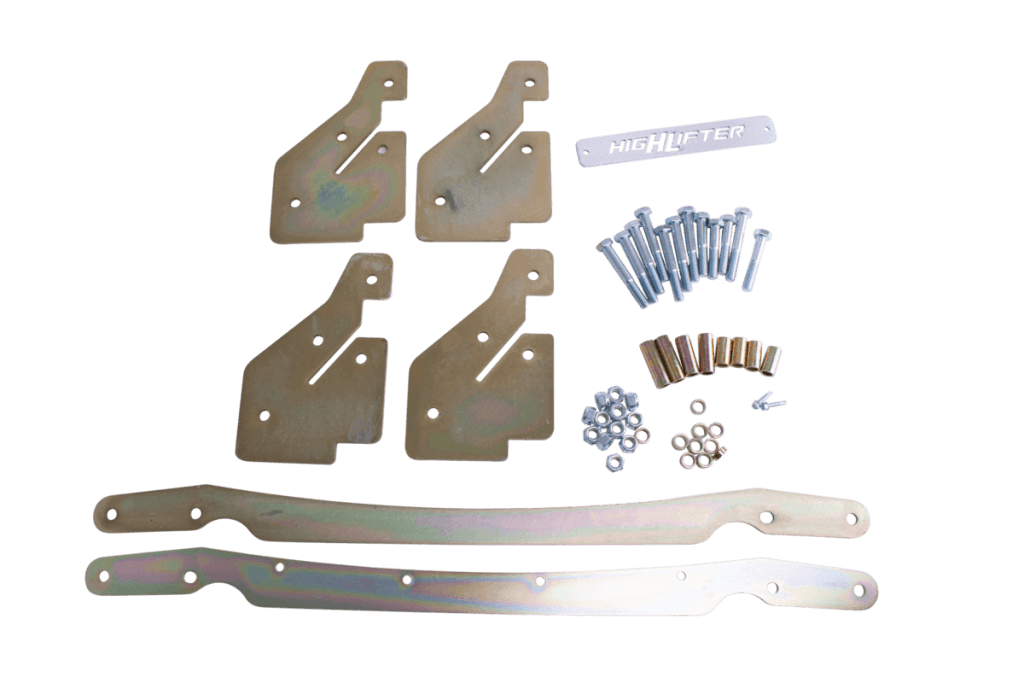
Here’s how:
Step 1: Front End Installation
After you jack up the front end of your UTV or ATV (with the wheels completely off the ground), you have to remove the front wheels and the shocks from both sides. Then, the longest of your lift brackets must be installed. Insert this bracket (usually called the ‘front long bracket’) so it runs from one shock to the other. Next, the front spacer should be placed on the frame of the shock mount.
Then, the front long bracket must be aligned with the front small bracket, using a hex bolt and a lock nut. Here it’s important to make sure that you’re using exact nut and bolt sizes.
Next, the top shock spring must be connected to the lift brackets. A hex bolt and lock nut can be used again here. We also highly recommend that washers be placed first on both sides of the shock eyelet for the best fit and performance. Once those have been installed, reattach your wheels, taking care to torque the lugs back to factory specifications.
Lastly? Reward yourself with a cold drink! Your front-end lift is installed.
Step 2: Back-End Installation
Back-end installation is – not surprisingly – almost identical to installing the front-end lift. But, there are a few differences that should be noted:
- Before you begin the installation, make sure you unclamp the brake line (usually found right side, under the seat)
- Place the jack on the rear of the bottom engine skid plate to make sure your vehicle is lifted properly and securely
- After you remove the bottom shocks, jack up your ATV or UTV about two inches higher to make sure you can easily reach the undercarriage
- Make sure the hex bolts used to attach the shock are facing inward. This will ensure that the lift brackets are attached to the frame
- Lastly, the lift bracket must be connected to the stock shock mount
Your Ride is Lifted. Now What?
Now, you ride with an increased confidence – no matter where the path takes you. Sit back and enjoy the newly rugged look of your ride. Plus, check out some of the accessories we offer to compliment your newly lifted ride, like snorkels, tires and more!
